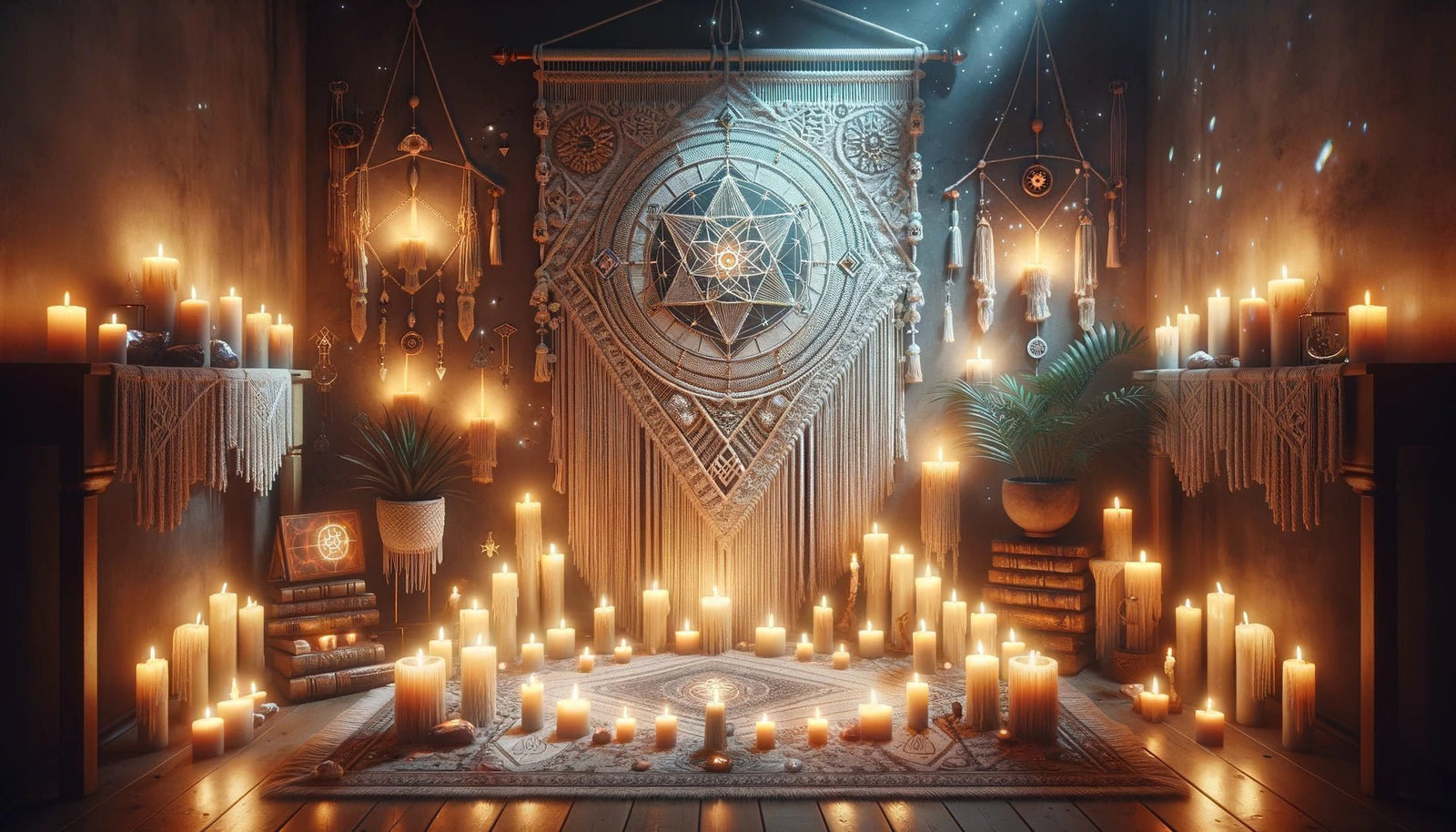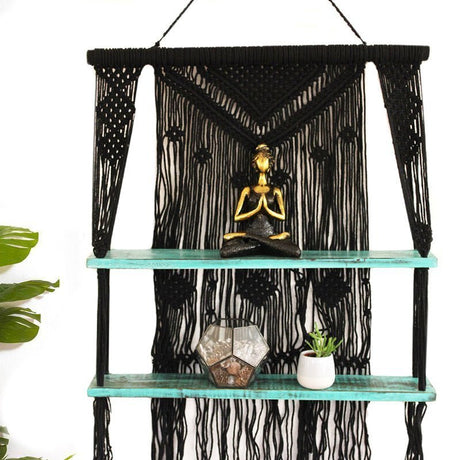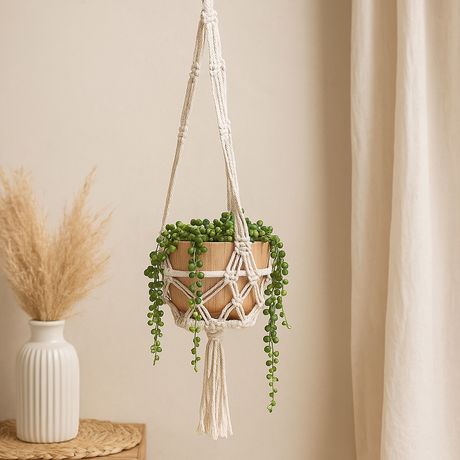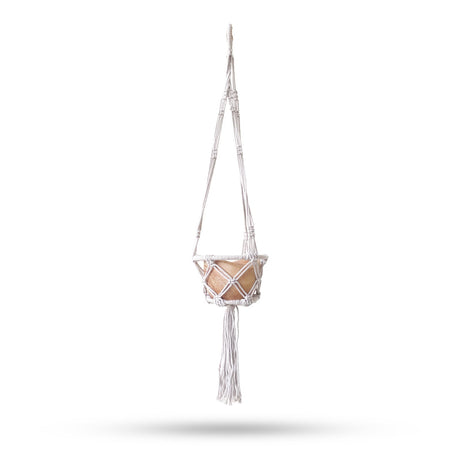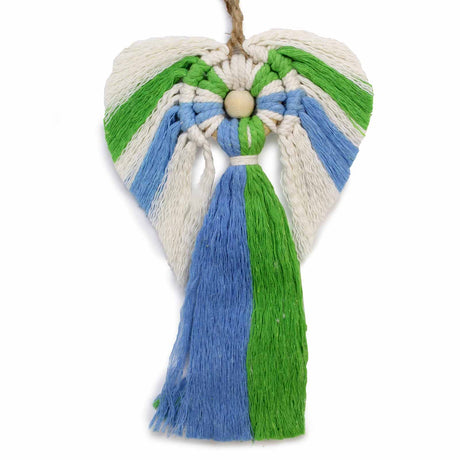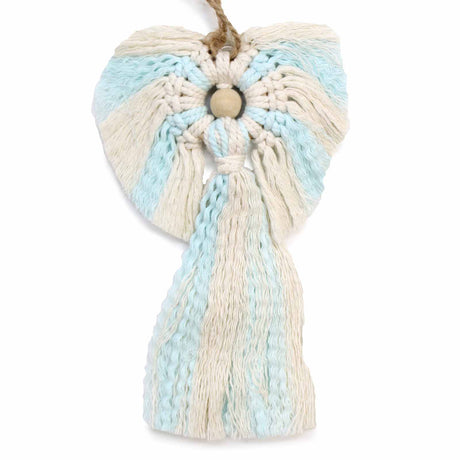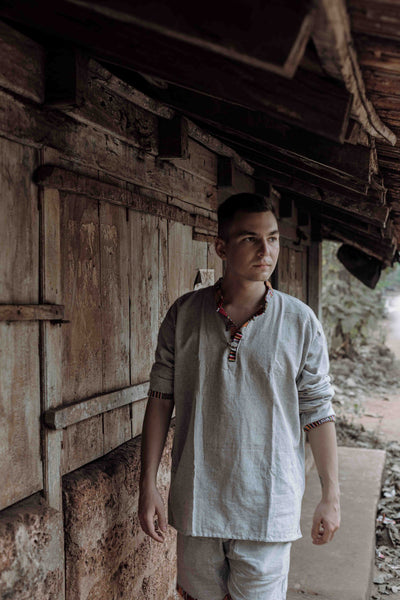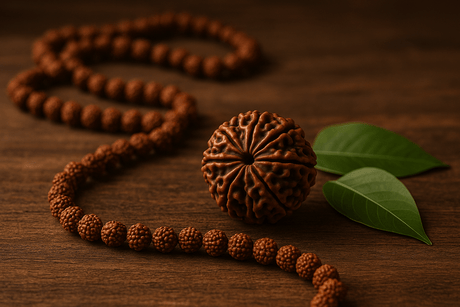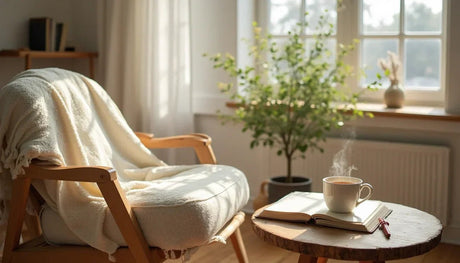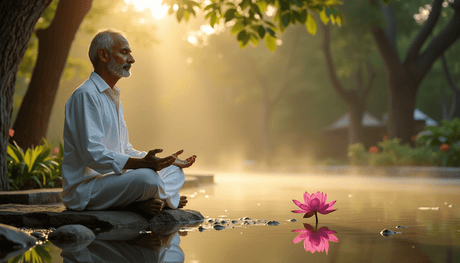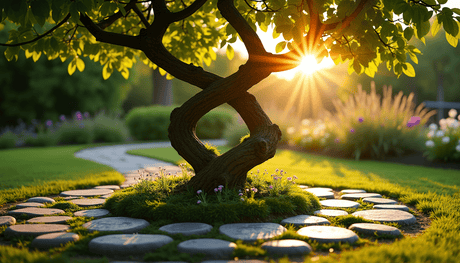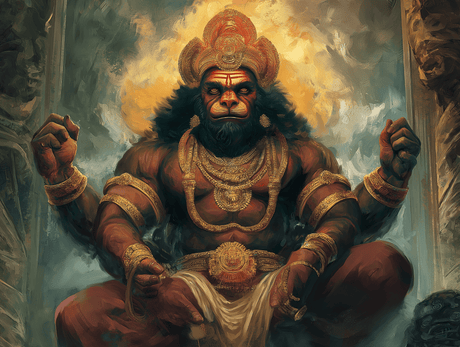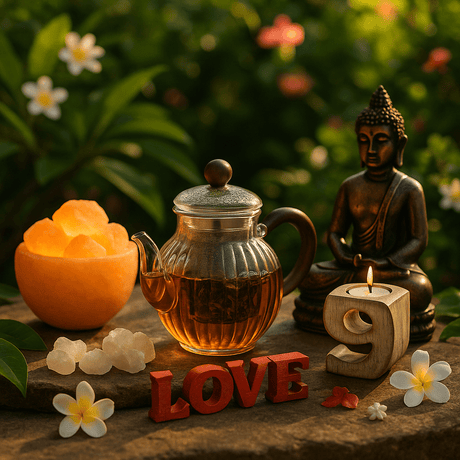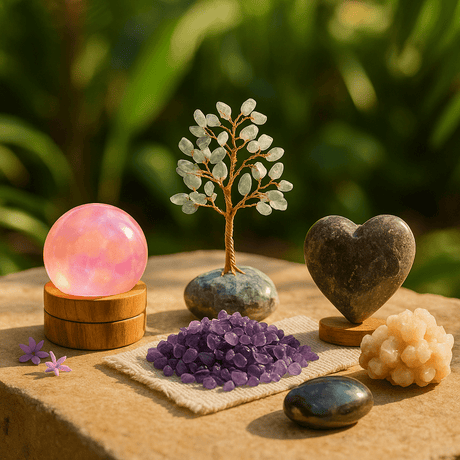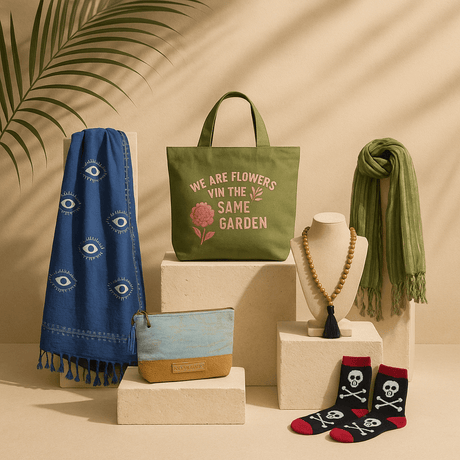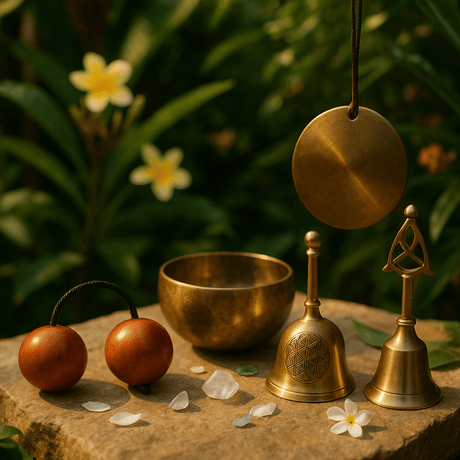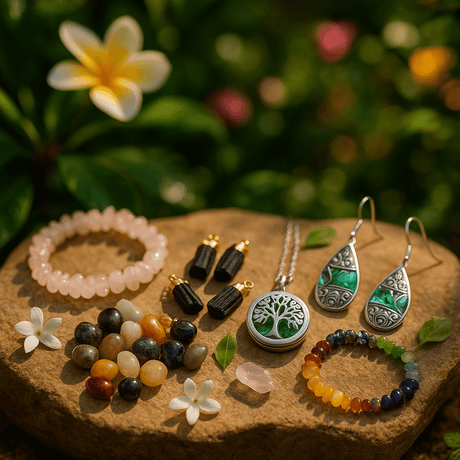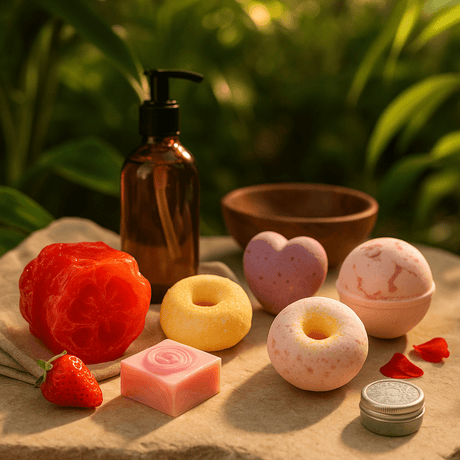In the realm of home decor, the art of macrame tapestry stands as a testament to the seamless blend of tradition and modernity. This ancient craft, with its roots deeply embedded in history, has evolved into a contemporary decor trend, offering both aesthetic appeal and a touch of mystique. Let's unravel the beauty and significance of macrame tapestries in modern homes, exploring their cultural depth, esoteric appeal, and practical versatility.
🌿 The Historical Tapestry of Macrame
Macrame, a form of textile art produced through knotting rather than weaving or knitting, has a rich and multifaceted history that spans continents and centuries. Its journey from utilitarian skill to beloved decorative art is as intricate as the patterns it comprises. The craft originated with the Arabic word "migramah," which signifies "fringe" or "embellishment," initially used to secure the edges of woven fabrics. This knotting technique was adopted by 13th-century Arabic weavers who finished the excess thread on hand-loomed fabrics into decorative fringes. The craft found its way into Europe through the Moorish conquest, flourishing in Spain and Italy before spreading throughout the continent.
The Victorian era marked the golden age of macrame, symbolizing refinement and decorum in English households. Ladies of the time gathered in drawing rooms to knot elaborate pieces for furnishings and garments, elevating macrame to a cherished leisure activity and a measure of artistic skill. This period saw the creation of some of the most intricate works of macrame, which continue to inspire artisans today.

🧵 Historical Highlights
- Babylonians and Assyrians. Earliest recorded uses of macrame-style knots as decoration.
- Arab Weavers. Introduced "migramah" for decorative fringes on hand-loomed fabrics.
- Moorish Conquest. Brought the craft to Spain, then Italy, spreading it through Europe.
- Victorian Era. Macrame became a fashionable decor trend, with books like Sylvia's Book of Macramé Lace showcasing its versatility.
🌿 Knots and Fibers: The Essence of Macrame
At the heart of macrame are its primary knots: the square (or reef knot) and forms of "hitching", including various combinations of half hitches. Cavandoli macrame, known for its geometric and free-form patterns, is performed mainly using the double half-hitch knot, emphasizing the craft's versatility.
Core Materials
- Natural Fibers. Cotton twine, linen, hemp, jute, leather, or yarn, celebrated for their eco-friendliness and durability.
- Synthetic Fibers. Modern additions to the macrame artist's palette, offering vibrant colors and innovative textures.
Materials and Process
- Jewelry and Accessories. Combining knots with beads, pendants, or shells for decorative pieces like friendship bracelets, belts, and macrame jewelry.
- Decorative Pieces. Larger works often start on wooden or metal dowels, with knotting boards used for smaller projects.

🧵 Cultural Significance and Creative Expression
Macrame tapestries embody a profound connection to history and spirituality, intertwining cultural tradition with personal expression. Originating from ancient Babylonians and Assyrians, macrame served as an early form of decorative art, indicating social status and carrying symbolic meanings.
The term "migramah" introduced by Arabic weavers in the 13th century, highlights macrame's evolution from practical uses, such as keeping flies off animals in northern Africa, to decorative fringes on fabrics. This transition from necessity to art form showcases the craft's adaptability and significance across cultures.
In the Victorian era, macrame symbolized refinement and leisure, transforming into intricate adornments for households and personal wear, as celebrated in Sylvia's Book of Macramé Lace (1882). This period marked macrame's status as a sophisticated art form, rich in complexity and beauty.

Beyond aesthetics, macrame's esoteric significance resonates today, with knots and patterns believed to offer protection and prosperity. This spiritual aspect elevates macrame to a meditative practice, enriching modern living spaces with texture, warmth, and depth. The craft's revival by millennials reflects a desire for handcrafted items that foster mindfulness and connect us to tradition in a digital age.
Today, macrame tapestries are treasured for their ability to blend artistic expression with cultural heritage, making each piece a cherished narrative of past and future, deeply rooted in artistic, cultural, and personal significance.
🌿 Conclusion
In conclusion, macrame tapestries offer a unique blend of cultural heritage, artistic expression, and modern decor, inviting a touch of magic and warmth into our living spaces. SHAMTAM's collection of macrame tapestries showcases this artistry, featuring a curated selection of pieces that embody both traditional craftsmanship and contemporary design. Explore our collection to find the perfect tapestry that resonates with your spirit and style, bringing a piece of history and enchantment into your home.
